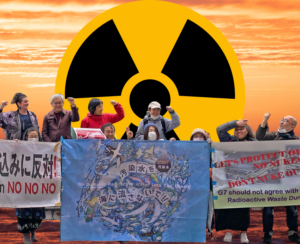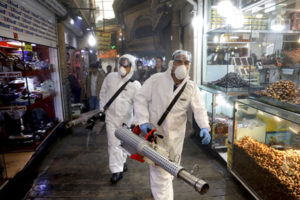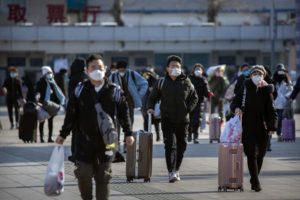U.N. Calls Emergency Session After Latest North Korea Missile Launch
The intermediate-range weapon is fired over Japan into the northern Pacific Ocean.UNITED NATIONS — The U.N. Security Council was called into emergency session Friday after North Korea conducted its longest-ever test flight of a ballistic missile, to talk about what to do now that Kim Jong Un has ignored its latest round of sanctions.
France’s Foreign Ministry said in a statement that the country is ready to work on tougher U.N. and EU measures “to convince the regime in Pyongyang that there is no interest in an escalation, and to bring it to the negotiating table.” It said North Korea will also be discussed during next week’s annual gathering of world leaders at the General Assembly.
The intermediate-range weapon North Korea launched early Friday from Sunan, the location of Pyongyang’s international airport, hurtled over U.S. ally Japan into the northern Pacific Ocean.
The launch signaled both defiance of North Korea’s rivals and a big technological advance.
Since U.S. President Donald Trump threatened North Korea with “fire and fury” in August, the North has conducted its most powerful nuclear test, threatened to send missiles into the waters around the U.S. Pacific island territory of Guam and launched two missiles of increasing range over Japan. July saw the country’s first tests of intercontinental ballistic missiles that could strike deep into the U.S. mainland when perfected.
The growing frequency, power and confidence displayed by these tests seem to confirm what governments and outside experts have long feared: North Korea is closer than ever to its goal of building a military arsenal that can viably target U.S. troops both in Asia and in the U.S. homeland.
This, in turn, is meant to allow North Korea greater military freedom in the region by raising doubts in Seoul and Tokyo that Washington would risk the annihilation of a U.S. city to protect its Asian allies.
U.N. Secretary-General Antonio Guterres condemned the missile launch as a serious violation of Security Council resolutions, coming less than two weeks after the North’s sixth nuclear test, which also violated a U.N. ban.
The Security Council’s emergency meeting Friday was behind closed doors.
On Monday the council unanimously approved its toughest sanctions yet on North Korea over its nuclear test, which Pyongyang said was a hydrogen bomb. The U.S. said the measures, including a ban on textile exports, combined with previous sanctions would ban over 90 percent of North Korea’s exports reported in 2016.
North Korea’s Foreign Ministry denounced the sanctions and said the North would “redouble its efforts to increase its strength to safeguard the country’s sovereignty and right to existence.”
South Korea’s Joint Chiefs of Staff said the latest missile traveled about 3,700 kilometers (2,300 miles) and reached a maximum height of 770 kilometers (478 miles). Guam, which is the home of important U.S. military assets, is 3,400 kilometers (2,112 miles) away from North Korea.
Despite its impressive range, the missile probably still is not accurate enough to destroy Guam’s Andersen Air Force Base, said David Wright, a U.S. missile expert with the Union of Concerned Scientists.
North Korea’s Rodong Sinmun newspaper said Friday, without mentioning the latest missile test, that its weapons tests demonstrate that it can “turn the American empire into a sea in flames through sudden surprise attack from any region and area,”
South Korean President Moon Jae-in, a liberal who initially pushed for talks with North Korea, said its tests currently make dialogue “impossible.”
“The sanctions and pressure by the international community will only tighten so that North Korea has no choice but to take the path for genuine dialogue” for nuclear disarmament, Moon said. “If North Korea provokes us or our allies, we have the strength to smash the attempt at an early stage and inflict a level of damage it would be impossible to recover from.”
North Korea has repeatedly vowed to continue its weapons tests amid what it calls U.S. hostility — by which it means the presence of nearly 80,000 U.S. troops stationed in Japan and South Korea.
Robust international diplomacy on the issue has been stalled for years, and there’s so far little sign that senior officials from North Korea and the U.S. might sit down to discuss ways to slow the North’s determined march toward inclusion among the world’s nuclear weapons powers.
Friday’s test, which Seoul said was the 19th launch of a ballistic missile by North Korea this year, triggered sirens and warning messages in northern Japan but caused no apparent damage to aircraft or ships. It was the second missile fired from Sunan over Japan in less than a month.
South Korea detected North Korean launch preparations Thursday, and President Moon ordered a live-fire ballistic missile drill if the launch happened. This allowed Seoul to fire its missiles only six minutes after the North’s launch Friday. One of the two missiles hit a sea target about 250 kilometers (155 miles) away, which was approximately the distance to Pyongyang’s Sunan, but the other failed in flight shortly after launch, South Korea’s Joint Chiefs of Staff said.
___
Kim reported from Seoul. Associated Press writers Foster Klug in Seoul and Mari Yamaguchi in Tokyo contributed to this report.
Your support matters…Independent journalism is under threat and overshadowed by heavily funded mainstream media.
You can help level the playing field. Become a member.
Your tax-deductible contribution keeps us digging beneath the headlines to give you thought-provoking, investigative reporting and analysis that unearths what's really happening- without compromise.
Give today to support our courageous, independent journalists.






You need to be a supporter to comment.
There are currently no responses to this article.
Be the first to respond.